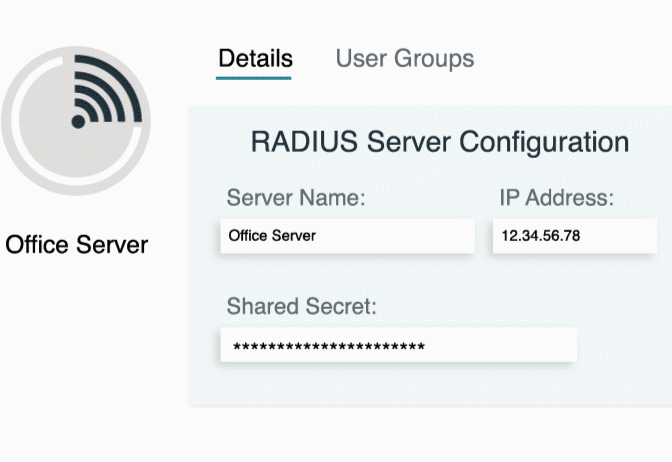Updated on March 7, 2025
Evil twin Wi-Fi attacks are a growing threat. These attacks trick users into connecting to fake Wi-Fi networks, allowing hackers to steal sensitive information. In this article, we’ll explain how these attacks work, why they’re dangerous, and how you can spot and protect yourself from them.
Evil Twin WiFi Attacks Explained
An evil twin attack happens when cybercriminals create a fake Wi-Fi network that looks just like a real one. These fake networks trick users into connecting without realizing it’s controlled by hackers. Once connected, the attacker can steal data, capture login details, or even install malware.
These attacks often take place in busy areas like airports, cafes, and hotels where public Wi-Fi is common. However, businesses aren’t safe either—attackers can target companies to access sensitive corporate information.
How It Differs From Other Wi-Fi Threats
Evil twin attacks are especially dangerous because they rely on deception:
- What They Do: Unlike typical rogue access points (APs) that aim to gain unauthorized internal access, evil twins are designed to steal data and carry out man-in-the-middle (MitM) attacks.
- How They Work: Victims unknowingly connect to an evil twin, mistaking it for a legitimate network. This approach is more subtle than deauthentication attacks, which only disrupt connections.
This stealthy tactic makes evil twin attacks highly effective, often slipping past the usual security measures users depend on.
How an Evil Twin Attack Works
Evil twin Wi-Fi attacks typically unfold in three core stages, each tailored to manipulate trust and exploit vulnerabilities.
Step 1: Scanning and Cloning the Legitimate SSID
Attackers begin by scanning their target environment to identify existing networks, specifically focusing on widely used or trusted SSIDs (Service Set Identifiers). Using readily available network tools, they clone the SSID of a legitimate Wi-Fi network to create an indistinguishable rogue access point.
The power of this deception lies in its simplicity—users often cannot differentiate between the real network and the clone.
Step 2: Forcing Users to Connect
To drive victims onto the evil twin, attackers may perform deauthentication attacks. These attacks disconnect users from the legitimate network, prompting them to re-connect. However, with an identical SSID now in range, users unknowingly connect to the malicious network.
This step becomes easier when the real Wi-Fi network lacks robust security protocols, such as those often found in public Wi-Fi or poorly configured enterprise networks.
Step 3: Intercepting Traffic and Credential Harvesting
Once users connect to the evil twin, attackers can monitor all the traffic passing through their rogue access point. This allows them to:
- Capture Credentials: Unencrypted data such as usernames, passwords, or session cookies can be directly extracted.
- Inject Malware: Hackers can exploit the connection to deliver malicious payloads to the victim’s device.
- Exploit Encrypted Data: Using techniques like SSL stripping or fake HTTPS certificates, attackers can downgrade secure connections and compromise sensitive information, even on encrypted websites.
Key Features and Components of Evil Twin Attacks
Evil twin attacks rely on specific tactics and tools to deceive users effectively:
- Spoofed SSID: Cloning the existing network name is the core of this attack, ensuring the malicious AP is nearly indistinguishable from the legitimate one.
- Rogue Access Point: The attacker’s malicious device acts as the gateway, luring unsuspecting victims.
- Packet Sniffing: Traffic interception tools capture data packets sent through the rogue network.
- Man-in-the-Middle Exploitation (MitM): Attackers relay or manipulate interactions between the victim and legitimate services.
- Deauthentication Attacks: Victims are forcibly disconnected from the real network to increase the likelihood of connecting to the rogue one.
Use Cases and Attack Scenarios
Evil twin attacks can be executed in various contexts, capitalizing on user behavior and network vulnerabilities.
Public Wi-Fi Hotspots
High-traffic locations like cafes, airports, and hotels are prime targets for evil twin attacks. These networks often lack strong encryption, making it easy for attackers to set up and exploit rogue APs.
Corporate Espionage
Enterprises are vulnerable to evil twin attacks aimed at compromising sensitive business communications or stealing credentials. Such attacks can cause severe financial and reputational harm.
Home Network Spoofing
High-value individuals or executives can become targets. Cybercriminals may clone home SSIDs in close proximity to intercept personal or work-related data.
Challenges and Security Considerations
Evil twin attacks pose detection and prevention challenges for organizations and individuals alike. Here are the key challenges and strategies to address them:
Difficulty Detecting an Evil Twin
- Automatic Connections: Many devices automatically reconnect to previously recognized SSIDs without confirming legitimacy.
- Indistinguishable Networks: To end-users, the rogue network often appears identical to the legitimate one.
Encryption Limitations
- While WPA2 or WPA3 encryption secures in-transit data, initial authentication processes are vulnerable to exploitation.
- Cybercriminals routinely exploit unencrypted traffic and downgrade encrypted sessions for credential theft.
Defensive Strategies
- Use a VPN: VPNs encrypt data traffic, providing a secure tunnel to prevent attackers from viewing intercepted data.
- Implement Network Authentication (802.1X): Using certificate-based authentication helps verify user and AP legitimacy.
- Deploy Wi-Fi Intrusion Detection Systems (WIDS): Intrusion detection systems monitor networks for unauthorized access points and alert administrators to potential Evil Twin activity.
- Educate Users: Train employees and users to verify SSIDs carefully and avoid public Wi-Fi when accessing sensitive data.
- Mandate HTTPS Usage: Enforce HTTPS connections as a standard to safeguard encrypted data from SSL stripping techniques.
Glossary of Terms
- Evil Twin Attack: A cyberattack involving a fraudulent Wi-Fi network tricking users into connecting, enabling data interception or exploitation.
- Rogue Access Point (AP): A malicious Wi-Fi network designed to mimic a legitimate SSID to deceive users.
- Man-in-the-Middle (MitM) Attack: An attack where a hacker intercepts and modifies data exchanged between two parties without their knowledge.
- Deauthentication Attack: A tactic used to disconnect users from legitimate Wi-Fi networks, coercing them to connect to a rogue access point.
- SSL Stripping: A method that downgrades HTTPS connections to HTTP to intercept sensitive data transmitted over secure websites.
- WIDS/WIPS (Wireless Intrusion Detection/Prevention System): Security solutions that monitor and respond to unauthorized access points in real-time






